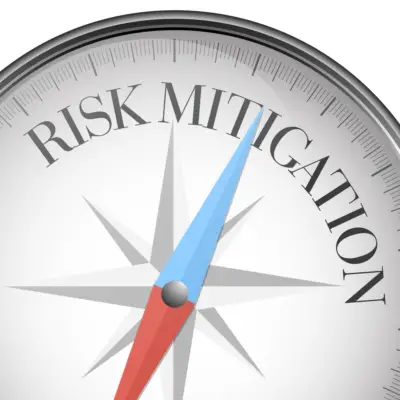In the realm of data security, identifying and mitigating risks is of paramount importance. Key Risk Indicators (KRIs) serve as valuable tools, enabling organizations to monitor and manage potential vulnerabilities and breaches proactively.
Quantifying risk factors through objective measurements, KRIs provide a systematic approach to assessing the likelihood and impact of data security threats.
This article aims to shed light on the significance of KRIs in safeguarding sensitive information. It will explore the understanding of data security risks and emphasize the role of KRIs in identifying potential vulnerabilities and breaches.
Furthermore, it will discuss how organizations can effectively mitigate these risks by implementing appropriate data security measures.
Using a proactive approach with KRIs, organizations can enhance their ability to protect confidential data from unauthorized access or misuse. This article will provide insights into leveraging KRIs as an essential component of a comprehensive data security strategy for businesses across various industries.

Understanding Data Security Risks
Understanding data security risks is crucial to effectively identify and mitigate potential threats to an organization’s sensitive information.
With the increasing reliance on technology and the vast amount of data generated, organizations face numerous challenges in safeguarding their data from unauthorized access or disclosure. Data breach prevention has become a priority for businesses as they strive to protect their valuable assets.
One key aspect of understanding data security risks is staying informed about the evolving landscape of data privacy regulations. Governments worldwide have recognized the importance of protecting individuals’ personal information and have implemented various regulations to ensure security.
These regulations often require organizations to implement specific measures such as encryption, access controls, and regular audits to safeguard sensitive data.
Data breaches can have severe consequences for organizations, including financial losses, damage to reputation, legal liabilities, and loss of customer trust. Therefore, organizations must invest in robust data security measures that align with industry best practices and comply with relevant laws and regulations.
Comprehending the potential risks associated with data security breaches and adhering to data privacy regulations, organizations can proactively identify vulnerabilities in their systems and take necessary actions to prevent unauthorized access or disclosure.
This proactive approach helps ensure the confidentiality, integrity, and availability of sensitive information while minimizing potential harm caused by data breaches.
Importance of Key Risk Indicators (KRIs)
Monitoring and measuring specific factors to identify potential vulnerabilities and mitigate associated threats is crucial in ensuring data security.
Key Risk Indicators (KRIs) play a vital role in this process by providing a structured framework for organizations to assess and monitor risks related to data security.
One of the main reasons highlighting the importance of KRIs is their ability to facilitate regular assessments. Defining measurable metrics, KRIs enables organisations to evaluate their data security posture consistently. Regular assessments allow for identifying emerging risks or changes in existing ones, enabling proactive measures to be taken before any significant harm occurs.
Furthermore, KRIs help organizations measure the impact of risk on their data security. This measurement allows for a more efficient allocation of resources and better decision-making processes regarding risk mitigation strategies.
The importance of key risk indicators lies in their ability to support regular assessments and aid in measuring the impact of risks on data security. Using these indicators, organizations can proactively identify vulnerabilities and mitigate threats effectively, thus ensuring robust protection against potential breaches or unauthorized access to sensitive information.
Identifying Vulnerabilities and Breaches
Identifying vulnerabilities and breaches requires a comprehensive analysis of potential weaknesses and unauthorized access points within an organization’s information infrastructure. Data breach prevention strategies play a crucial role in this process, aiming to mitigate the risks associated with data security breaches.
These strategies involve implementing various measures such as encryption protocols, firewalls, intrusion detection systems, and employee training programs to enhance the overall security posture.
Assessing the impact of data security breaches is another important aspect of identifying vulnerabilities and breaches. Organizations need to understand the potential consequences that may arise from such incidents to manage them effectively.
This includes evaluating the financial losses incurred, reputational damages suffered, legal implications faced, and regulatory compliance violations encountered. In assessing these impacts, organizations can develop robust incident response plans that address immediate remediation actions and long-term preventive measures.
Furthermore, identifying vulnerabilities and breaches necessitates constantly monitoring and evaluating key risk indicators (KRIs) related to data security. These KRIs serve as early warning signs that alert organizations about threats or weaknesses in their information infrastructure.
Regularly reviewing these indicators enables organizations to identify vulnerabilities before they are exploited by malicious actors proactively.
Identifying vulnerabilities and breaches entails meticulously analysing potential weaknesses within an organization’s information infrastructure. This process involves implementing effective data breach prevention strategies while assessing the impact that could result from such incidents.
Additionally, monitoring key risk indicators is crucial in detecting vulnerabilities before malicious actors exploit them.
Mitigating Risks with KRIs
Mitigating risks associated with potential threats and weaknesses in an organization’s information infrastructure requires constant monitoring and evaluation of early warning signs that alert organizations about any vulnerabilities before malicious actors can exploit them.
Risk assessment strategies are crucial in identifying and prioritizing key risk indicators (KRIs) related to data security. These strategies involve systematically identifying, analysing, and evaluating potential risks to an organization’s information assets.
Once identified, KRIs can be used to develop effective mitigation strategies. Organizations need to establish processes for responding to data breaches promptly. This includes implementing incident response plans that outline the steps to be taken when a breach occurs. The response plan should include actions such as containment, eradication, recovery, and lessons learned from the incident.
In addition to incident response plans, organizations should focus on preventive measures such as regular software updates, employee training programs on best data security practices, and robust access controls. Addressing vulnerabilities through these proactive measures, organizations can minimize the impact of potential breaches and protect sensitive information from unauthorized access.
Mitigating risks associated with data security requires a holistic approach that incorporates risk assessment strategies and robust data breach response plans. Through continuous monitoring and evaluation of KRIs, along with prompt incident response actions, organizations can effectively mitigate risks and safeguard their information infrastructure from potential threats.

Implementing Effective Data Security Measures
To establish a robust defence against potential threats and vulnerabilities in an organization’s information infrastructure, it is essential to implement comprehensive and proactive measures that prioritize protecting sensitive information.
One effective measure is the use of data encryption methods. Data encryption involves converting data into a code that can only be accessed with a decryption key, ensuring its confidentiality and integrity. Organisations can safeguard sensitive data from unauthorized access or interception by encrypting sensitive data.
Additionally, implementing employee training programs is crucial for enhancing data security measures. Employees play a vital role in maintaining the security of an organization’s information infrastructure.
Training programs should educate employees about best practices for handling sensitive data, such as using strong passwords and being cautious about phishing attempts. Moreover, employees should be trained to identify and promptly report potential security breaches to the appropriate authorities.
Effective implementation of these measures requires collaboration between various organisational stakeholders, including IT departments and management teams. Regular audits should also be conducted to assess the effectiveness of these security measures and identify any areas that require improvement.
Prioritize data encryption methods and employee training programs, organizations can significantly reduce the risk of data breaches and ensure the safety of their sensitive information.
Frequently Asked Questions
What are the common types of data security risks that organizations face?
Organizations commonly face various security risks, including unauthorized access to sensitive information, breaches, and potential data loss or theft. Data breach prevention strategies and encryption techniques are crucial in mitigating these risks.
How can organizations measure the effectiveness of their data security measures?
Organizations can measure the effectiveness of their data security measures through data security audits and benchmarking. Data security audits evaluate the organization’s compliance with regulations and industry standards, while benchmarking compares their data security practices against other organizations in the same industry.
Are there any specific regulations or compliance standards that organizations must consider when implementing data security measures?
Data security compliance refers to the adherence of organizations to regulations and standards to protect sensitive data. Legal implications of data breaches may include financial penalties, reputational damage, and potential lawsuits.
What are the potential consequences of a data breach for an organization?
The potential consequences of a data breach for an organization include financial losses, reputational damage, legal and regulatory penalties, loss of customer trust, and the need to implement security measures in response to the breach.
How can organizations stay updated on the latest trends and developments in data security to ensure their measures are up to date?
Organizations can stay updated on the latest trends and developments in data security by actively engaging in data security awareness programs that educate employees about emerging threats and implementing regular monitoring and evaluation of their security measures.

Conclusion
Understanding data security risks is crucial for organizations to protect their sensitive information. Key Risk Indicators (KRIs) are vital in identifying vulnerabilities and breaches, allowing businesses to mitigate risks effectively.
Implementing effective data security measures based on these indicators, organizations can enhance their security posture and safeguard against potential threats.
Companies must remain vigilant and proactive in addressing data security concerns to prevent unauthorized access and ensure their valuable data’s confidentiality, integrity, and availability.

Chris Ekai is a Risk Management expert with over 10 years of experience in the field. He has a Master’s(MSc) degree in Risk Management from University of Portsmouth and is a CPA and Finance professional. He currently works as a Content Manager at Risk Publishing, writing about Enterprise Risk Management, Business Continuity Management and Project Management.

